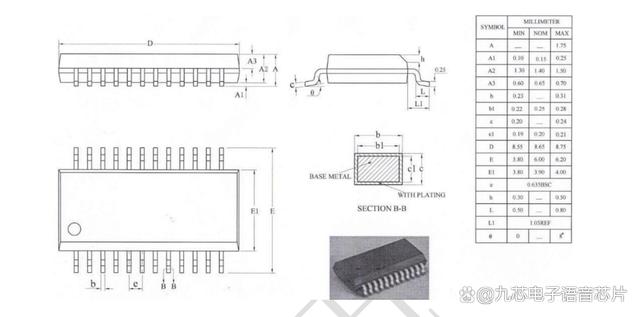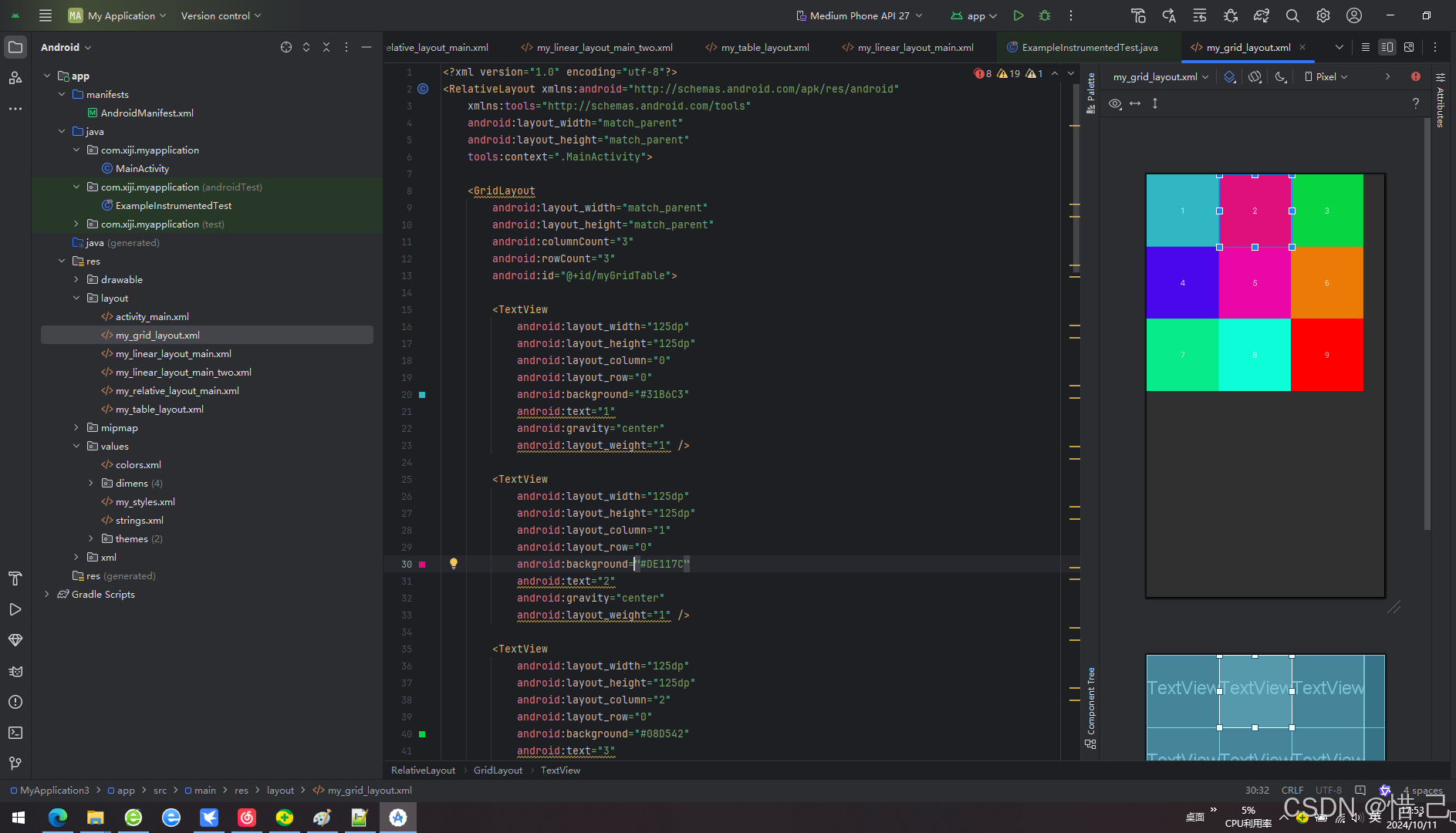在教育和考试领域,答题卡自动评分系统能够大大提高效率和准确性。本文将介绍如何使用OpenCV库实现一个简单的答题卡检测项目。这个项目包括读取图像、检测答题卡轮廓、透视变换、二值化处理、检测选择题答案,并最终计算得分。
导入库和定义常量
import cv2
import numpy as np
ANSWER_KEY = {0: 1, 1: 4, 2: 0, 3: 3, 4: 1} # 假设的答题卡答案密钥辅助函数
cv_show
这个函数用于显示图像,便于调试。
def cv_show(name, img):
cv2.imshow(name, img)
cv2.waitKey(0)order_points
这个函数用于对四个点按照左上、右上、右下、左下的顺序进行排序。
def order_points(pts):
rect = np.zeros((4, 2), dtype='float32')
s = pts.sum(axis=1)
rect[0] = pts[np.argmin(s)]
rect[2] = pts[np.argmax(s)]
diff = np.diff(pts, axis=1)
rect[1] = pts[np.argmin(diff)]
rect[3] = pts[np.argmax(diff)]
return rectsort_contours
这个函数用于根据指定方法对轮廓进行排序。
def sort_contours(cnts, method='left-to-right'):
reverse = False
i = 0
if method == "right-to-left" or method == 'bottom-to-top':
reverse = True
if method == 'top-to-bottom' or method == 'bottom-to-top':
i = 1
boundingBoxes = [cv2.boundingRect(c) for c in cnts]
(cnts, boundingBoxes) = zip(*sorted(zip(cnts, boundingBoxes), key=lambda b: b[1][i], reverse=reverse))
return cnts, boundingBoxesfour_point_transform
这个函数用于将透视扭曲的矩形变换成一个规则的矩形。
def four_point_transform(image, pts):
rect = order_points(pts)
(tl, tr, br, bl) = rect
widthA = np.sqrt(((br[0] - bl[0]) ** 2) + ((br[1] - bl[1]) ** 2))
widthB = np.sqrt(((tr[0] - tl[0]) ** 2) + ((tr[1] - tl[1]) ** 2))
maxWidth = max(int(widthA), int(widthB))
heightA = np.sqrt(((tr[0] - br[0]) ** 2) + ((tr[1] - br[1]) ** 2))
heightB = np.sqrt(((tl[0] - bl[0]) ** 2) + ((tl[1] - bl[1]) ** 2))
maxHeight = max(int(heightA), int(heightB))
dst = np.array([[0, 0], [maxWidth - 1, 0], [maxWidth - 1, maxHeight - 1], [0, maxHeight - 1]], dtype='float32')
M = cv2.getPerspectiveTransform(rect, dst)
warped = cv2.warpPerspective(image, M, (maxWidth, maxHeight))
return warped主流程
读取图像和预处理
image = cv2.imread(r'./images/test_01.png')
contours_img = image.copy()
gray = cv2.cvtColor(image, cv2.COLOR_BGR2GRAY)
blurred = cv2.GaussianBlur(gray, (5, 5), 0)
cv_show("blurred", blurred)
edged = cv2.Canny(blurred, 75, 200)
cv_show('edged', edged)检测轮廓
cnts = cv2.findContours(edged.copy(), cv2.RETR_EXTERNAL, cv2.CHAIN_APPROX_SIMPLE)[1]
cv2.drawContours(contours_img, cnts, -1, (0, 0, 255), 3)
cv_show('contours_img', contours_img)
docCnt = None
cnts = sorted(cnts, key=cv2.contourArea, reverse=True)
for c in cnts:
peri = cv2.arcLength(c, True)
approx = cv2.approxPolyDP(c, 0.02 * peri, True)
if len(approx) == 4:
docCnt = approx
break透视变换
warped_t = four_point_transform(image, docCnt.reshape(4, 2))
warped_new = warped_t.copy()
cv_show('warped', warped_t)检测选择题答案
thresh_Contours = thresh.copy()
cnts = cv2.findContours(thresh, cv2.RETR_EXTERNAL, cv2.CHAIN_APPROX_SIMPLE)[1]
warped_Contours = cv2.drawContours(warped_t, cnts, -1, (0, 255, 0), 1)
cv_show('warped_Contours', warped_Contours)
questionCnts = []
for c in cnts:
(x, y, w, h) = cv2.boundingRect(c)
ar = w / float(h)
if w >= 20 and h >= 20 and ar >= 0.9 and ar <= 1.1:
questionCnts.append(c)
questionCnts = sort_contours(questionCnts, method="top-to-bottom")[0]
correct = 0
for (q, i) in enumerate(np.arange(0, len(questionCnts), 5)):
cnts = sort_contours(questionCnts[i:i + 5])[0]
bubbled = None
for (j, c) in enumerate(cnts):
mask = np.zeros(thresh.shape, dtype="uint8")
cv2.drawContours(mask, [c], -1, 255, -1)
thresh_mask_and = cv2.bitwise_and(thresh, thresh, mask=mask)
total = cv2.countNonZero(thresh_mask_and)
if bubbled is None or total > bubbled[0]:
bubbled = (total, j)
color = (0, 0, 255)
k = ANSWER_KEY[q]
if k == bubbled[1]:
color = (0, 255, 0)
correct += 1
cv2.drawContours(warped_new, [cnts[k]], -1, color, 3)
score = (correct / 5.0) * 100
print("[INFO] score: {:.2f}%".format(score))
cv2.putText(warped_new, "{:.2f}%".format(score), (10, 30), cv2.FONT_HERSHEY_SIMPLEX, 0.9, (0, 0, 255), 2)
cv2.imshow("Original", image)
cv2.imshow("Exam", warped_new)
cv2.waitKey(0)代码实现效果:

总结
通过图像预处理、轮廓检测、透视变换、二值化处理、答案检测和评分计算,我们能够自动化地读取答题卡并计算得分。这种方法不仅提高了效率,还减少了人为错误。希望这个项目对你有所启发,并能够在你的实际应用中发挥作用。









![[C语言] 函数详解:库函数与自定义函数](https://img-blog.csdnimg.cn/img_convert/8b4bf585a78633e1f1f035d523c9e3fd.png)









